|
Sitka, Alaska
2006 Residency
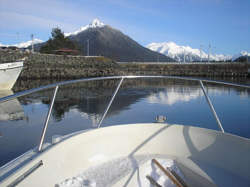
Paula Larke spent 14 days in Sitka, Alaska.
Sometimes you get there by boat.
Her performances and workshops were with the following community
organizations.
Download
"A Day by Day Photographic Journey"
Requires Adobe Reader
Sitka Public Schools
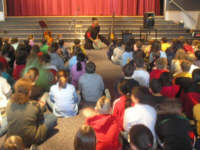
• Assembly program on anger management in elementary and middle
schools using personal
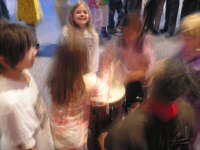 stories, folk, R&B and blues
music, dance games and rap. stories, folk, R&B and blues
music, dance games and rap.
• Classroom lecture demonstration on the effects of
racism and classism, and homophobia on substance abuse and
family/community violence in the African American community using song,
story, and rap/spoken word to history class in high school.
Pacific High School
• Workshop in writing for recovery and self-esteem.

Mt. Edgecumbe High
School
• Assembly program –
with emphasis on the futility of elitism, common ground of personal
family tragedy or dysfunction in the human community; the effects of
spiritual love and peacemaking on the mental environment.
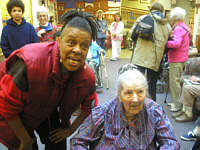
Sitka
Tribe of Alaska
• Visit to senior centers and tribal homes to
personally invite residents to final concert on the 7th day.
• Interview elders, sharing of personal stories of
family heritage and values.
Family Justice Center
• Consulted with
director of center on effects of arts activities on family and community
conflict.
Presbyterian Church
• Worship with tribal elders and families.

General
Community
• Jam with local musicians at “the Back Door”
coffeehouse.
Tribal Community Center,
Sheet Ka Kwan ‘na Kahidi
• Introduction at the Monthly Grind open mic and
community jam
• Final concert, “The HONOR PATH ~ Talking with the
Ancestors in My Soul” performance including local musicians, tribal
representatives, residents warmed and motivated by the week’s
experiences with the Artist.
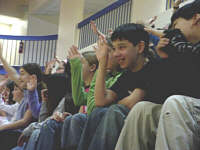
Blatchley Middle School: You would think she asked, "Who wants free ice cream?".
Larke's question was, "Who knows a bully?". Everywhere Paula went she was met with delightful people from the Sitka
community.
Go
here for a testimonial about her residency
The objectives of this residency were to:
• Advocate for diversity in the local community -
integrating the works of residents into the creative process of the
artist, using the humor, references, and language of artist’s culture to
supplement the familiar languages of the residents. Encourage
“thinking outside the color box” to share stories of recovery.
• Spread the message of “peace through laughter and
recognition of the trickster spirit in us all”.
• Increase and facilitate harmony between local
agencies by their sharing in the heart and art of a stranger.
• Get the artist invited back for more of the above;
get the locals committed to more of the above in her physical absence.
• Involve and employ college students in the technical
process of art-making for peace, wellness, and social justice.
• Defy stereotypes of the “Mad Black Woman” with
indigenous Alaskans and conservative, borderline - expatriated Whites.
This project was made possible in part by a grant from the
Network of Cultural Centers of Color
and the
National Performance Network.
Major contributors of
the National Performance Network include the Doris Duke Charitable
Foundation, Ford Foundation, the National Endowment for the Arts (a
federal agency), Altria and the Nathan Cummings Foundation.
Major contributors of
the Network of Cultural Centers of Color include the Doris Duke
Charitable Foundation, Ford Foundation, Altria, and S. I. Savings Bank.
Back
to Top
Back to "Been There
Done That" page
|